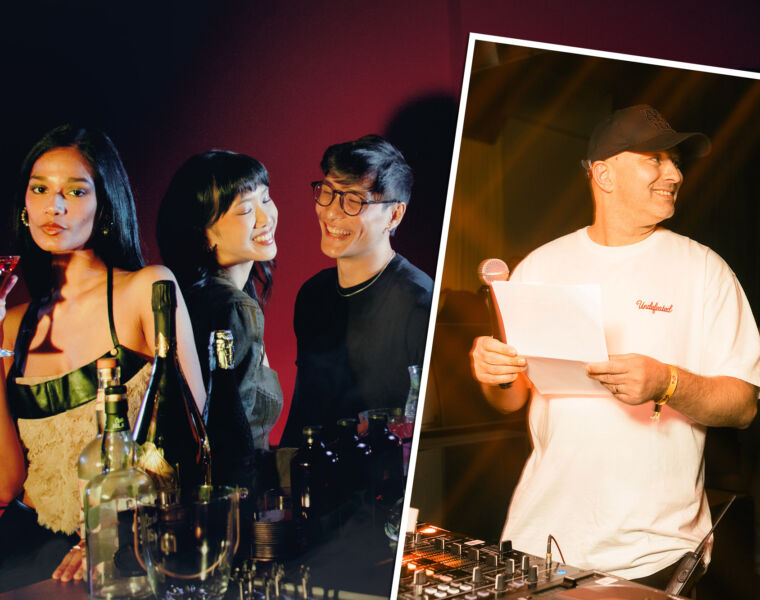
Jean-Michel Deluc – from would be French teacher to world renowned Master Sommelier
It was in England where this Frenchman, originally from Gers, discovered wine by studying for five years to become a sommelier. This unique training gave Jean-Michel Deluc a global perspective of wine that could sometimes be lacking from traditional French sommeliers.
Sabi Phagura caught up with him to ask him all the important questions surrounding wine.

LM: How did you get started in the wine industry?
JD: Two incidents: First I missed a diploma to become a French teacher in France so I went to Toulouse Catering School. Then I came to England to learn English, and to pay for my tuition, I worked at the Café Royal as a waiter. When one of the wine waiters retired, they suggested I take over thinking that as a Frenchman I must have known about wine. I told them I’d accept the job as long they pay for my wine studies. So they did, and I learned about wine and English at the same time and managed to succeed in both.
LM: Give us three misconceptions about wine.
JD: Some people still think a screw cap is a sign of poor quality. That’s not true. Well, this is not necessarily the case. However, it’s worth noting that they’re typically used for young wines, but no, it’s not synonymous with cheap or poor quality wine. One says that we can’t put red wine in the fridge. Why not? Reds need to cool down too! Rosé is a blend of red and white wine. TRUE AND FALSE, Making rosé by blending both red 7 white wine to get a pink wine is strictly forbidden in France. Still, 15% of the world’s rosés are produced this way!
LM: When ordering wine there is a ritual of swirling, sniffing and tasting. What exactly are we looking for?
JD: That’s right. We look at the wine and get the first feel for it by looking at its appearance and judge things like the colour, how shiny it is, whether or not it’s clear and the concentration, which is to say, how thick the wine is.
When smelling the wine, we take our first smell once the wine has been poured, then we do some swirling before taking a second sniff. The aromas will change each time!

Tasting is what we do last. Then we’re looking for other things, such as the attack or whether or not the wine is tannic; wines with a lot of tannins tend to make your tongue a little dry. The tasting notes provided to Le Petit Ballon subscribers with each wine make all this a lot easier and simpler.
LM: What else should we be looking for in a good wine?
JD: It all comes down to individual preference. Some people like strong, red wines, others prefer getting something from a winemaker they know and trust. We work closely with our winemakers and I’m responsible for ensuring every bottle we share with our subscribers is tasted and tested to perfection every month.
LM: What are your top three tips for a complete wine novice?
JD: Look at the Le Petit Ballon videos online, of course, but do as I did to learn English every day, I went to see an English film. So have a glass of wine every day, not always French, and see how you feel about it – even write down how you feel if you like, it can help.

LM: Tell us, you are a founding partner of Le Petit Ballon, tell us how this opportunity come about?
JD: Martin Ohanessian, one of the co-founders of Le Petit Ballon always loved food and wine but didn’t know much about it. He took some wine-tasting classes and workshops, but quickly got bored, they were too expensive or too difficult! Basically, quite boring. He was looking for a wine expert and then he met me! We really hit it off!
Wine is all about enjoyment. When I was working at the Ritz in Paris, I really wanted to share my love of wine with everybody so Le Petit Ballon was a great new adventure and a perfect fit for me!
LM: How should this particular wine be drunk in terms of temperature and food pairings?
 JD: Firstly we have the Clos de l’Ours – Grizzly 2015. To start, we serve it at around 10-12°, but don’t need to carafe this one. Food-wise, I’d recommend something fresh, stuffed vegetables with salad, or even some grilled white meats.
JD: Firstly we have the Clos de l’Ours – Grizzly 2015. To start, we serve it at around 10-12°, but don’t need to carafe this one. Food-wise, I’d recommend something fresh, stuffed vegetables with salad, or even some grilled white meats.
As for the Clos de l’Ours – Rosé Petit Ours, you should serve this at 10°. This wine would be fantastic for barbeques during the summer months. I’m thinking Grilled white meat, stuffed tomatoes and grilled vegetables on a warm summer evening with friends: perfect!
LM: Where do you see yourself in your profession in five years’ time?
JD: I want to give our consumers the chance to try wines and appellations they might not have tried before and to bring consumers and winemakers as close to one another as possible.
LM: What would be your advice to someone interested in making wine a professional career?
JD: Like I mentioned earlier, I really would stress that it’s beneficial to have a glass of wine every day, and be sure to make a note of the impression it makes – note how the wine looks, the smell and how it tastes. Most of all, enjoy it!
LM: And finally, what’s your favourite wine and why?
JD: Every wine is different and there are different wines that are right for different occasions and dishes. A very simple wine could be my favourite if it is drunk in good surroundings with good food and with great people. So to cap more complex, possibly more expensive wines, which if drunk with a dreadful meal, and with people I don’t appreciate, this might turn out to be far more disappointing than you’d expect.
LM: Thank you so much for your time. We’ll raise a glass or two to that!





You must be logged in to post a comment.